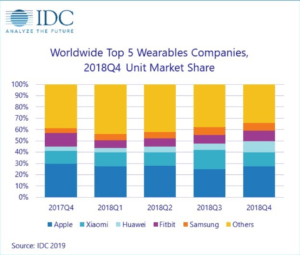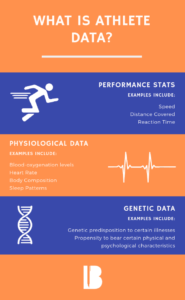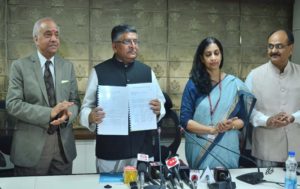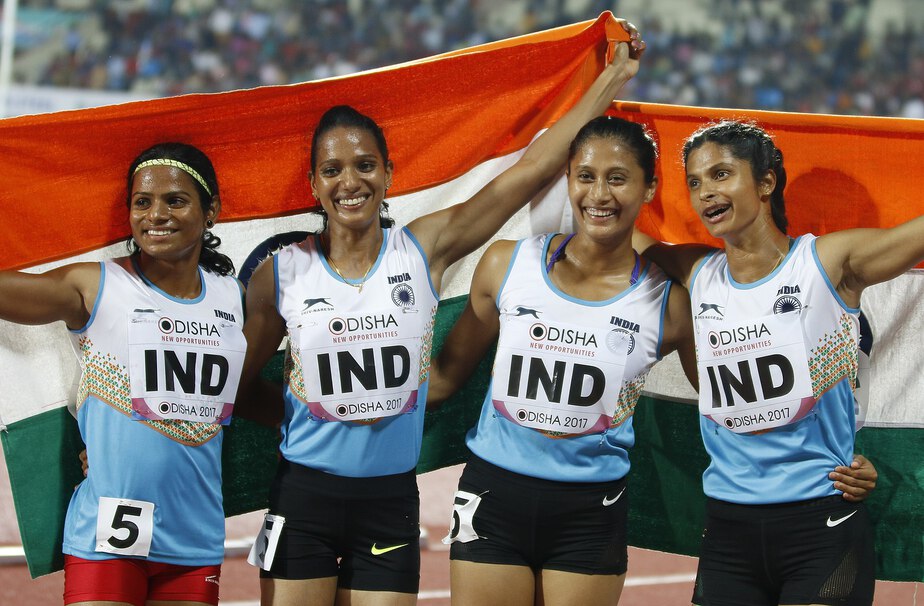Written by Swagam Dasgupta & Sourya Reddy
Fitbit. Apple. Samsung. Boltt. Huawei. What do all these companies have in common? The ability to tell you how fast your heart beeps when you’re out on your morning run; or how many steps you have taken on a busy Diwali day as you’re moving door to door celebrating; or just how well you were sleeping after a long day’s work. And these are just a tiny part of their rather extensive monitoring capabilities.
By moving headfirst into the wearable devices segment, all these companies have changed the way ‘gym bros’, fitness freaks, power-walkers, yoga aficionados and your regular ‘I walk a lot around my house’ types perceive and interact with physical activity.

This is especially true for athletes; given that their job demands constant peak physical levels, wearable devices and other supporting technology have created a wealth of information that can be used to achieve this goal. This kind of technology also helps other stakeholders in a sport; coaches, scouts, teams, federations, businesses and more. The value of these technologies is in their ability to capture and store the world’s most valuable commodity — data.
What is Athlete Data?
Bear with us for a second — especially if you’re a millennial reading this — as we stroll down memory lane. Do you remember trading cards? From Pokemon and Digimon cards to the WWE and Cricket cards you would get with a bottle of Milo, they all had some data laid out that gave the player on the card a certain rating.

Although these were quite rudimentary in nature, the cards largely assigned points based on perceived skill levels. But today, with the kind of technology available in the world of sports, it is possible to break such calculations down to much better-segmented definitions. From physiological data (height, muscle-mass, blood pressure, speed, etc.) to genetic data (inherited diseases, sex, information about family, etc.), there is hardly any information about an athlete that is unknown.

With the amount of data that athletes give out on almost a daily basis, concerns about the management, storage and protection of the same loom large.
Athletes as the Point of Focus
The global sports industry is valued at $488 billion as of 2018 and is expected to rise to $614 billion by 2022. As with any industry, as it grows, the effort to understand and discover each nitty-gritty of the field, and how to improve efficiency intensifies. It is at the very heart of this industry that the athletes find their place; it is thus obvious that efforts are pooled in to make them more efficient, better their performances and by extension, draw more eyeballs.
India is feeling this love for sports as well; the sports industry here is growing at 15% per annum, as opposed to the global average of 5%. With the advent of professional leagues starting with the Indian Premier League (IPL), sports across disciplines are finding some time in the spotlight.
It is here, at the effort to ‘maximise output’, that athlete data becomes extremely valuable, and thus, sensitive. With conversations of data protection taking place across industries, it was just a matter of time before it was brought to sports. Given this, what is the situation like for Indian athletes and their data?
Across the economy, there are measures being brought in to handle data for each particular sector. For instance, the healthcare sector has the proposed Digital Information Security in Healthcare Act (DISHA). It’s fortunate to see that India has an overarching legal framework for data protection in the works (the Srikrishna committee draft). Although there are no specific guidelines or safeguards for sports, the principles of the Srikrishna draft can be applied to this sector.
Consent as the First Reform
The Srikrishna draft has recognized the need for an evolved understanding of consent in general. It proposes a different framework that “… treats the consent form, not as a means to an end, but rather as an end in itself.” Specifically, it requires consent to be ‘free’, ‘informed,’ ‘clear’, ‘specific’ and ‘capable of being withdrawn’. This could have a significant impact on the way consent is viewed in sports within the country. Instead of treating consent as a cog in the bureaucratic system, this will ensure that it is viewed as an effective right of the athlete that she can exercise without restraint.

There needs to be a structural reform in the way athletes are made to understand and take advantage of data protection laws, such as the right to access and the right to cease the processing of her data.
Consent is the first point through which this conversation begins; unfortunately, this ‘consent’ is often ambiguous. As pointed out by Anish Dayal (Supreme Court advocate) at the Sports Law and Policy Centre’s Symposium in July this year, “Data protection has NOT translated into a contractual regime, it is still confined to confidential clauses.” This is emblematic of the current problem at hand — consent needs to be given prime importance.
Thoroughly enjoyed being part of this panel. Lots of work and thinking to be done in the field of human rights, gender and sport. Well done #sportslawindia gosports for curating this. And kudos for a fabulous event https://t.co/qXE7bXSQHX pic.twitter.com/mdsTKW6akd
— Anish (@anish_dayal) August 3, 2019
Not only does the athlete need to understand why and when her data is being taken, but also how it is going to be processed and stored. Here, the first barrier comes in the form of language; consent forms must be explainable and available in multiple languages. With Indian athletes largely having rural roots, overcoming the language barrier is crucial.
To make things easier for the athlete, there must be a structural reform which requires a legal confidant or advisor who can guide the athlete to make sure that she is aware of all her rights and ensured of no negative consequences. Consent forms one, but arguably the most crucial step in the process of bringing athletes to the centre of this data protection conversation.
There are several other facets of athlete protection that this piece does not talk about — from data trading to purpose limitation, there is a whole host of issues that need to be looked at carefully. As such, it is the need of the hour that sports-specific data protection be created; the Srikrishna draft speaks to this, by concentrating on the need for different standards for different kinds of data. Given how large in volume and diversity athlete data is, doing so becomes all the more important. With the big boom of sports as a market, it’s not surprising that the focus had shifted off athletes for a while; it’s time to shift the limelight back onto them and address their requirements first.
This is the first part of a series on Sports and Data.
Featured image courtesy Wikimedia Commons|CC BY-SA 4.0







[…] READ ALSO: Putting the Athlete First: Data Protection in Sports […]
[…] READ ALSO: Putting the Athlete First: Data Protection in Sports […]
Bhupendra diwakar bhupendra diwakar
I am extremely interested in sports data analytics and applying computer vision and machine learning to sport. I’d like to get some more context about where this article is coming from.
Is enough of data being used in the Indian sports industry so as to improve the performance of national teams? I might be wrong, but I think not. Let alone at the “rural” level! Hence, this looks like a forward-thinking piece for the Indian context. Is it meant to be so? If not, could you make the current Indian sports data context a little more clear for me?
Hi Dhruv, Thanks for your questions. Although the amount of data being used to increase performance in sports in India isn’t quantified or public, there are a number of private and public institutions making use of the three types of athlete data – performance, physiological and genetic. Most of this is concentrated on the “elite” tier of athletes either through coaching academies like the Abhinav Bindra Targetting Performance academy etc. Especially in the national stage, a number of new-age devices are being used to understand, analyze and better player performance in sports like cricket, badminton etc. So to answer your question, there is a lot of data crunching for sports performance being done in India, primarily for players on the national stage. That being said, it might not be at the level at which other countries such as the US or China are using data.
I think there was some misunderstanding with regards to the “rural” reference, apologies. It isn’t that data is being extracted at the rural level. As mentioned, it’s mainly for “elite” athletes on the national tier. But, what we cannot discount is the fact that most of the athletes that are representing India on a national stage hail from rural backgrounds, and hence there are language constraints especially during legal proceedings. The best example is the consent form that needs to be signed to check players for doping. A lot of anecdotal evidence shows that most of these forms were only printed out in English and Hindi without further explanation on how it could and will affect the athlete (who might not know these languages).
Hi Swagam, thank you for your clarifications. Now I understand the context in which this article is placed much better. Great work, and looking forward to the other parts of this series!